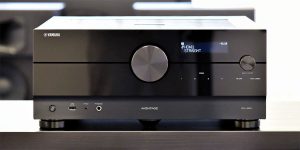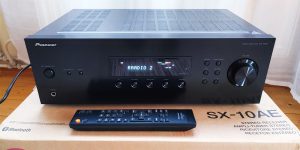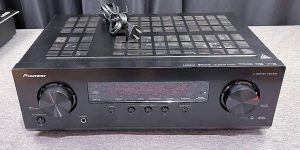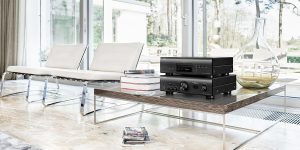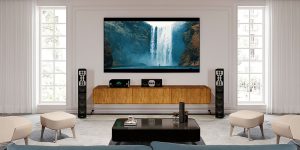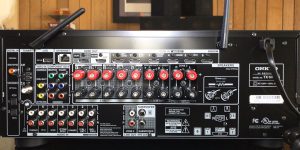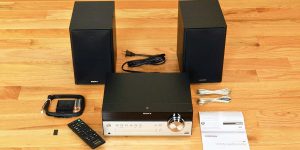Nothing is surprising in the Denon vs. Onkyo confrontation because the brands really go hand in hand in producing AV receivers of the medium and budget segments. The companies’ models are very popular among users, and it’s not strange that you wandered here looking for answers to your questions.
In this article, I present a comparative analysis of the best Denon and Onkyo receivers, choosing similar devices and looking at the differences in functionality and technology that may influence your choice. I hope you find this useful, but remember, there is nothing like personal experience. Good luck!
Brief history of Denon
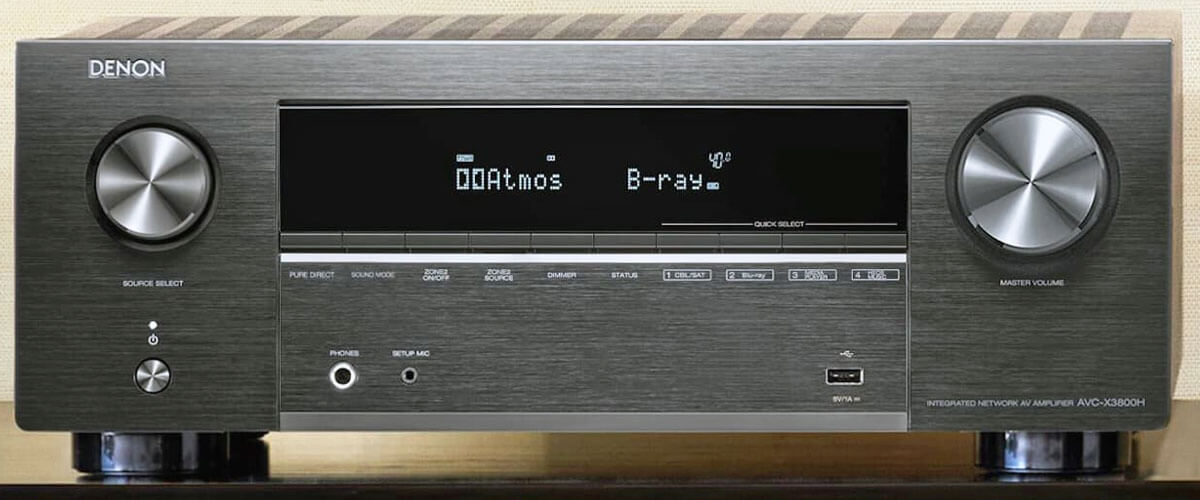
As the name implies, Nippon Chikuonki Shoukai (Japan Recorders Corporation) was founded in Japan at the beginning of the last century (1910). Its founder was an American, Frederick Whitney Horne, and he started with the production of gramophones, so the company knows a lot about music. Brand Denon (Denki + Onkyo) appeared 20 years later, and since then, for more than 100 years, it has been the first to produce products manufactured with the introduction of emerging technologies (such as Dolby Digital). Today, the company occupies a leading position among users of different levels because there is a technique for every taste and purse in the company’s range.
And if you are interested, you can learn more about the history of Denon by clicking here
Brief history of Onkyo
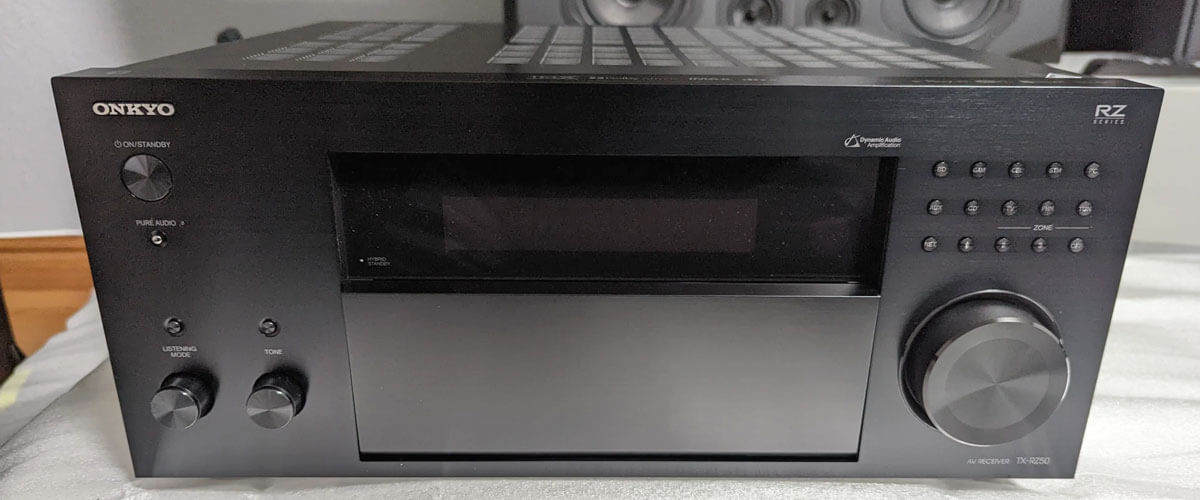
Also in Japan, in 1946, Japanese Takeshi Godai started production of vinyl turntables and tonearms in Osaka. Then Onkyo (translated as “acoustics of sound”) expanded production to amplifiers and receivers. For more than 75 years, it has been a very popular brand among buyers of audio equipment for medium and budget segments.
The company was the first to introduce an AVR (model TX-SR605) with simultaneous compatibility with Dolby TrueHD and DTS-HD Master Audio. In 2015, Onkyo united in cooperation with Pioneer Corporation, which is also a popular brand in the production of audio equipment.
Please follow this link to learn more about the company’s rich history.
General sound differences between Onkyo and Denon receivers
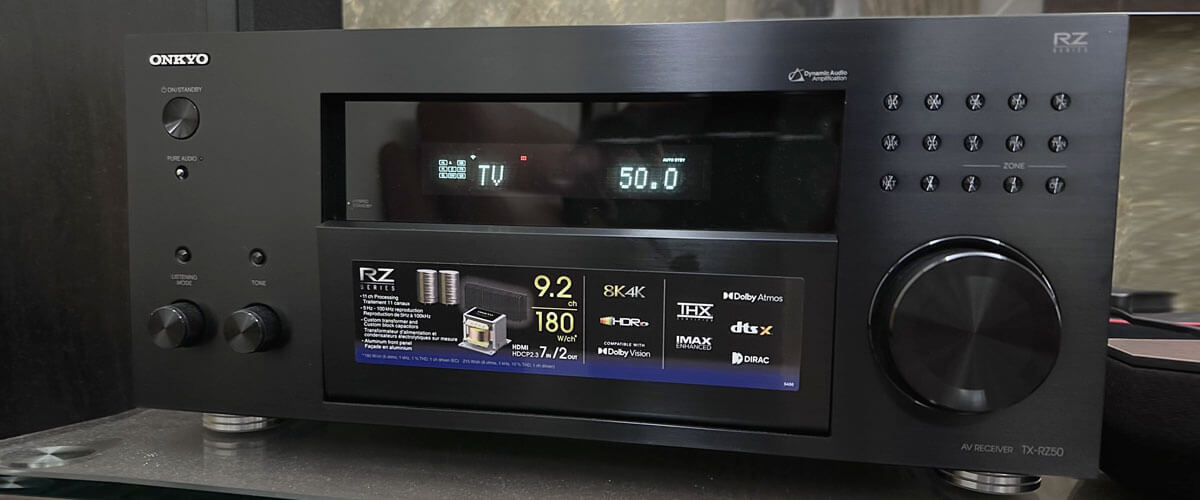
It is difficult to distinguish any general, pronounced sonic differences in the Onkyo vs. Denon confrontation. If only because, in many ways, your experience will depend on your additional equipment, such as sound source, speakers, specifics (acoustics) of the room, etc.
From what I could point out, there is a difference in the audio auto-calibration system, as it is generally accepted that it impacts the final soundstage. Onkyo’s is AcuuEQ, while Denon’s is Audyssey MultEQ XT/Audyssey MultEQ XT32. My experience of many years of testing and studying other users’ reviews shows that Denon’s calibration system is more advanced, as it is easier to use and more adaptive (it takes into account not only the size of the room but also the objects located in it). Onkyo’s calibration system, on the other hand, has a lot of negative comments. But I believe that it is simply simpler, more primitive.
Also, users note greater reliability of Denon equipment (receivers in particular) than Onkyo, and this is due to the use of more expensive parts and components in the design. But that’s why brand AVRs are often more expensive.
Nevertheless, the general rule among connoisseurs is that the sound of receivers of the same price category will be practically indistinguishable (with proper tuning/calibration). So, based on the above, you will choose between Denon or Onkyo brands rather than models. So I advise you to lean towards the receiver that you like aesthetically, the cost of which does not exceed the budget allocated for its purchase and corresponds to your wishes in the field of functionality.
Our criteria for choosing Denon and Onkyo receivers for comparison
For my reviews, I always try to choose the models, the brightest representatives of their price categories, which combine the functionality that meets different goals and objectives so that you can find the finest option for yourself.
The criteria by which I chose receivers for review:
- listening experience.
- availability of necessary built-in features (support for modern video technologies, surround sound formats, Bluetooth, Ethernet/Wi-Fi/streaming services, etc.).
- a sufficient number of input and output connections.
- price.
Mid-priced Denon and Onkyo AVRs comparison
Denon AVR-X3800H vs Onkyo TX-RZ50
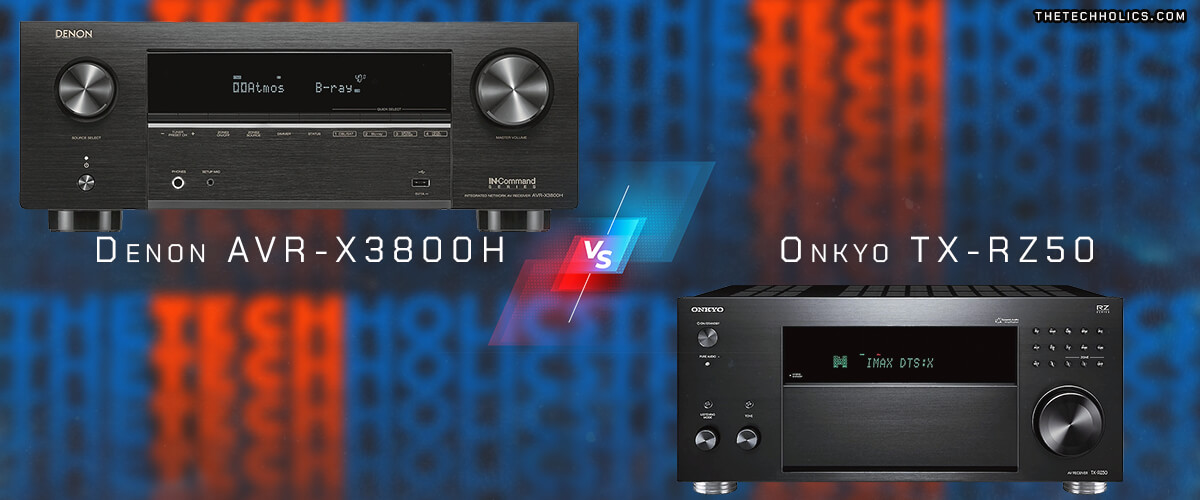
The first pair of my review were representatives of the middle segment 9-channel Denon AVR-X3800H 2022 and Onkyo TX-RZ50 2021. Despite the almost identical price, there are plenty of differences between the models, but the analysis is more interesting.
I’ll start with the fact that Onkyo owns more connectors than Denon. And although all HDMI ports in both models have version 2.1 and support 8K video, it’s still nicer to have one more (in TX-RZ50). Plus, it also beats the AVR-X3800H in the other types of connectors.
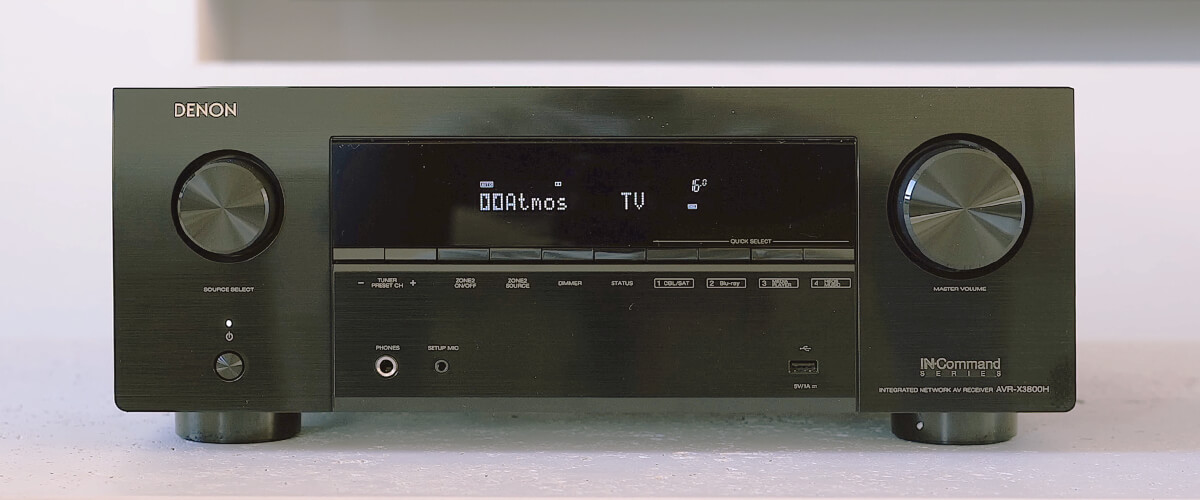
Both receivers are expandable up to 11 channels, but X3800H has pre-outputs for 2 additional subwoofers. And in the power duel, the TX-RZ50 wins, providing 120W versus the Denon’s 105W. And if we continue in the sound field, it is worth noting that X3800H decodes Auro 3D format, but Onkyo has multi-zoning for 3 rooms. Also, the TX-RZ50 has Onkyo’s unique THX Certification, which speaks to the professional quality of audio-visual effects. But if we compare Denon vs. Onkyo sound quality in terms of impact on the human ear, I didn’t notice any significant differences: both receivers sound wonderful.
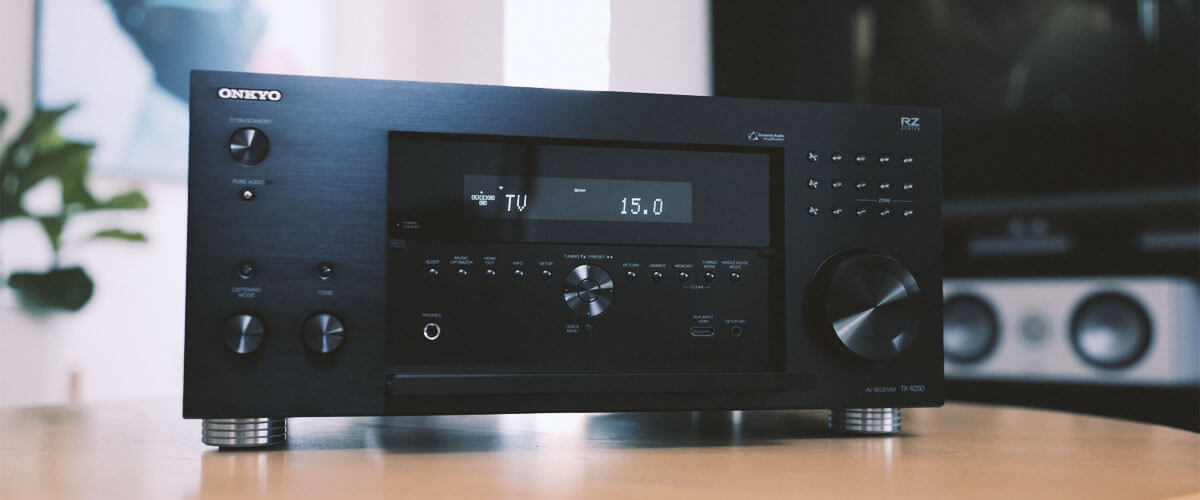
In this category, I can’t give preference to any AVR, as each has advantages over the other. Having determined your desires, having listened to the sound of both of them beforehand, and having studied in detail the specifications of Denon AVR-X3800H and Onkyo TX-RZ50, each of you will be able to make an independent choice. And believe me, you won’t miss out in any case.
Denon AVR-X3800 key specs
- Channels: 9.4.
- Power output: 105W/8 Ohm, 135W/6 Ohm.
- HDMI inputs/outputs: 6/3.
- Video functions: 8K/60Hz, 4K/120Hz pass-though, upscaling up to 8K.
- Bluetooth/Wi-Fi: yes/yes.
- Streaming services: AirPlay 2, Spotify, TuneIn, Deezer, Tidal, Netflix, Amazon Prime.
- Supports: HDMI ARC, HDMI eARC, HDMI CEC, HDCP2.3, HDR10+, Dolby Vision.
- Surround sound: DTS:X, DTS Neural:X, DTS Virtual:X, Dolby Atmos, DTS HD Master, Dolby TrueHD, Dolby Atmos Height Virtualization, Dolby Atmos Music, Auro 3D.
Onkyo TX-RZ50 key specs
- Channels: 9.2.
- Power output: 120W/8 Ohm, 250W/6 Ohm.
- HDMI inputs/outputs: 7/2.
- Video functions: 8K/60Hz, 4K/120Hz, 4K/60Hz pass-through, video upconversion (up to 1080p and 8K) for analog and HDMI sources.
- Bluetooth/Wi-Fi: yes/yes.
- Streaming services: AirPlay2, Deezer, Tidal, Pandora, Spotify, Amazon Music HD, TuneIn.
- Supports: HDMI ARC, HDMI eARC, HDMI CEC, HDCP2.3, HDR10, HDR10+, Dolby Vision.
- Surround sound: DTS HD Master, DTS Neural:X, Dolby TrueHD, Dolby Surround, Dolby Digital Plus, Dolby Atmos Height Virtualization, Dolby Atmos, IMAX Enhanced.
Denon AVR-X3800H
Onkyo TX-RZ50
Denon AVR-X1700H vs Onkyo TX-NR6100
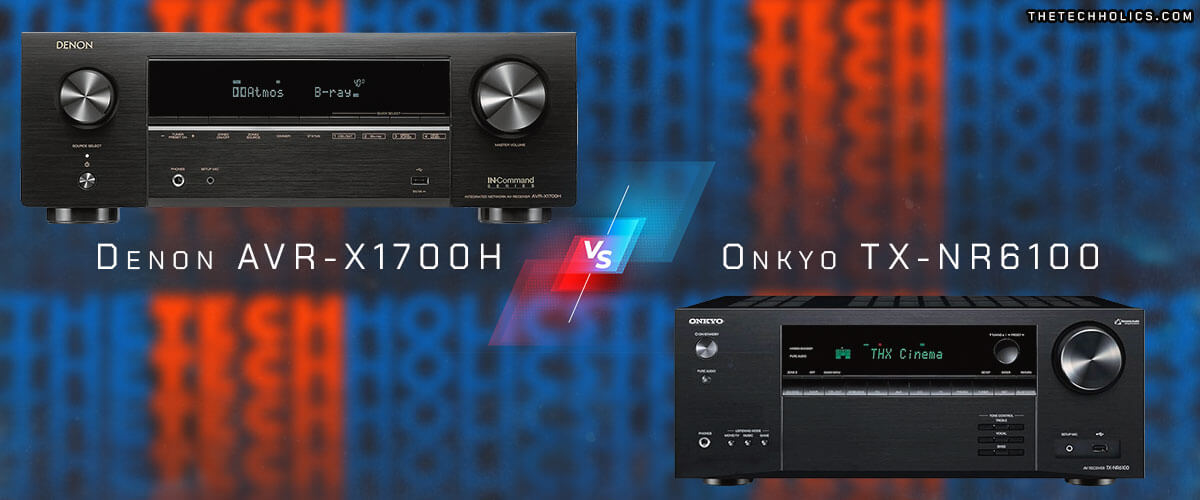
Moving on to the 7-channel models (both released in 2021) Denon AVR-X1700H and Onkyo TX-NR6100, I will say that here we will find no less differences, but they concern more minor things, so I will try to highlight the most significant ones, most of which can affect the sound quality.
Both AVRs can transmit video with 8K resolution, the only difference being that AVR-X1700H upscales resolution up to 8K, while TX-NR6100 only up to 4K. But Onkyo broadcasts video to the second zone in 4K resolution (if the first zone is disabled, then 8K), which is a clear advantage over Denon, which can only broadcast audio. I would also note that the Denon uses pre-outputs to send audio to the 2nd zone, while the Onkyo uses RCA Line Out.
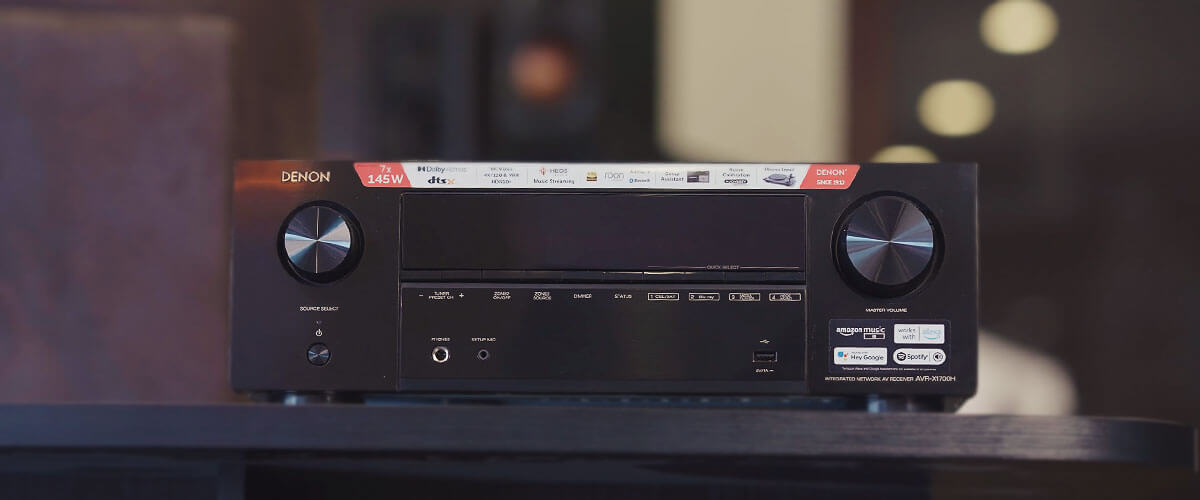
Power output is again higher with Onkyo (100W vs. 80W), and the TX-NR6100 has THX Certification. But it’s worth noting that the Denon has a higher-end DAC (384 kHz/32 Bit vs. 192 kHz/24 Bit). Nevertheless, both process Dolby Atmos and DTS:X surround sound formats, but AVR-X1700H also decodes their virtual versions, which means you can do without ceiling speakers.
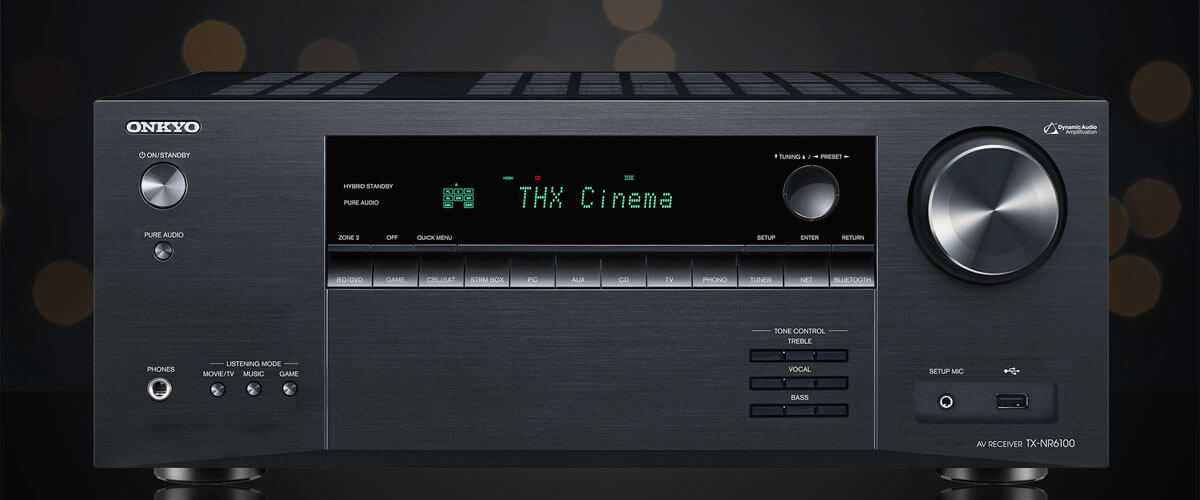
Once again, in the Onkyo versus Denon duel, I find it hard to pick a winner. So I’ll leave the decision to your judgment. After all, it’s the right thing to do because you’re about to make a friend for years, and no one has the right to impose their personal opinion on you. Both of them are quality modern AVRs.
Denon AVR-X1700H key specs
- Channels: 7.2.
- Power output: 80W/8 Ohm, 120W/6 Ohm.
- HDMI inputs/outputs: 6/1.
- Video functions: 8K/60Hz, 4K/120Hz pass-though, upscaling up to 8K.
- Bluetooth/Wi-Fi: yes/yes.
- Streaming services: AirPlay 2, Spotify, TuneIn, Deezer, Tidal, Netflix, Amazon Prime.
- Supports: HDMI ARC, HDMI eARC, HDMI CEC, HDCP2.3, HDR10+, Dolby Vision.
- Surround sound: DTS:X, DTS Virtual:X, Dolby Atmos, DTS HD Master, Dolby TrueHD.
Onkyo TX-NR6100 key specs
- Channels: 7.2.
- Power output: 100W/8 Ohm, 210W/6 Ohm.
- HDMI inputs/outputs: 6/2.
- Video functions: 8K/60Hz, 4K/120Hz, 4K/60Hz pass-through, 1080p to 8K/4K video upscaling via HDM.
- Bluetooth/Wi-Fi: yes/yes.
- Streaming services: AirPlay2, Deezer, Tidal, Pandora, Spotify, Amazon Music HD, TuneIn.
- Supports: HDMI ARC, HDMI eARC, HDMI CEC, HDCP2.3, HDR10, HDR10+, Dolby Vision.
- Surround sound: DTS HD Master, DTS Neural:X, Dolby TrueHD, Dolby Surround, Dolby Digital Plus, Dolby Atmos Height Virtualization, Dolby Atmos, IMAX Enhanced.
Denon AVR-X1700H
Onkyo TX-NR6100
Budget Denon and Onkyo AVRs comparison
Denon AVR-S660H vs Onkyo TX-SR494
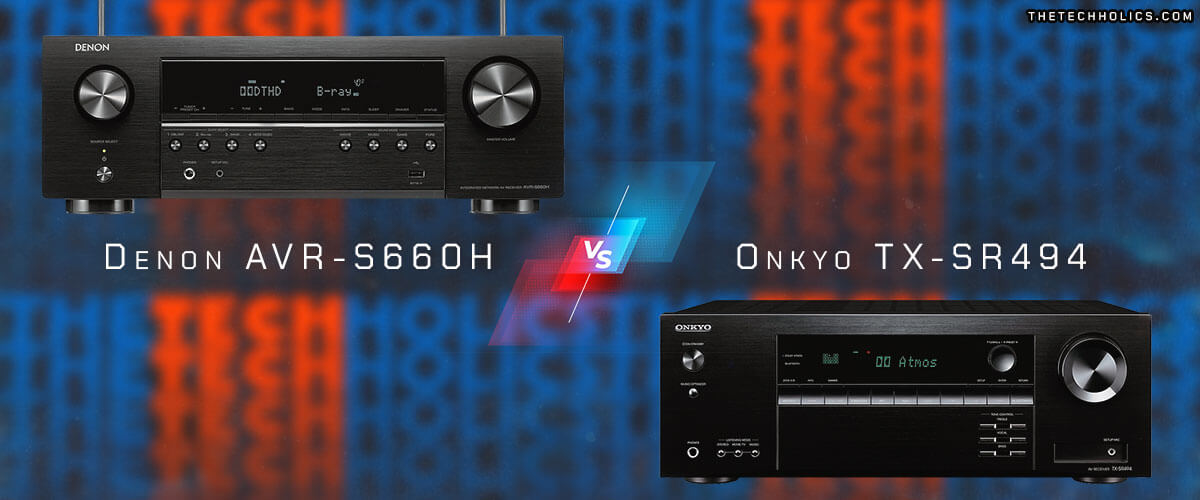
When choosing models for comparison in the budget category, I decided not to make it easy for you. Despite being so different, the Denon AVR-S660H 2021 and Onkyo TX-SR494 2019 cost almost the same but offer completely different features.
To start with, they have different channel counts: 5.2 for the AVR-S660H and 7.2 for the TX-SR494. And that means that only Onkyo can offer immersive surround sound formats (Dolby Atmos and DTS:X). But don’t jump to conclusions.
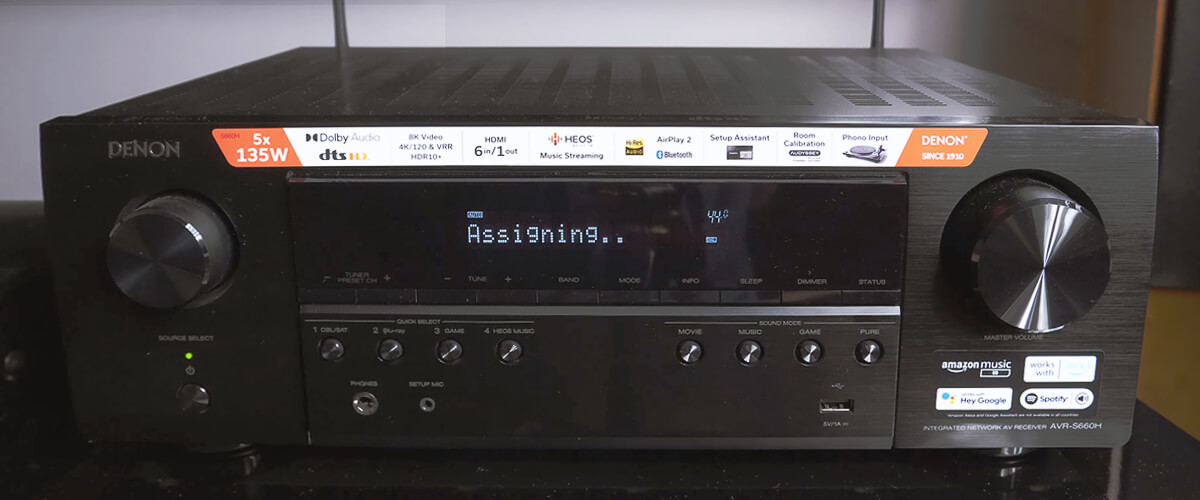
The Denon has more connectors to build your system (6/1 vs. 4/1 HDMI and USB with Hi-Res audio support), supports 8K video performance (TX-SR494 only 4K), and is compatible with AirPlay 2. So, if you’re not interested in high-altitude channels but need a more versatile receiver, I’d think three times before making a decision. Even with the lower power of 75W vs. 80W of TX-SR494, which you won’t notice the difference, as all cheap devices have lags at maximum volume, in the area of sound, you can’t say that Denon is inferior in the quality of detail, dynamics or balance. But all this is, of course, within the capabilities of inexpensive devices.
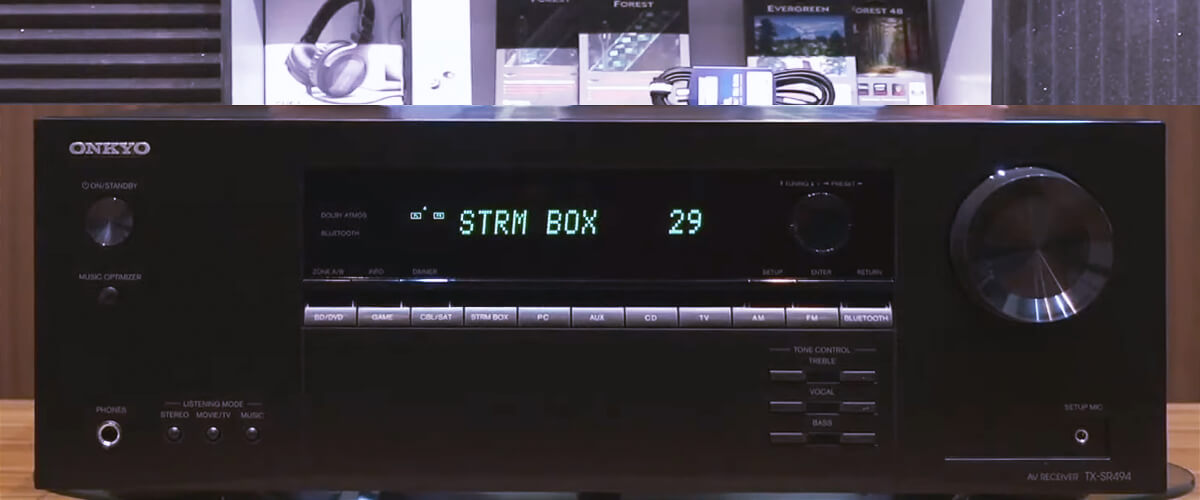
Denon AVR-S660H and Onkyo TX-SR494 can compete in the field of functions at an identical price, and I recommend you compare receivers based on your preferences and needs. After all, good devices will always find their buyer since the main task of any AVR is to provide high-quality surround sound.
Denon AVR-S660H key specs
- Channels: 5.2.
- Power output: 75W/8 Ohm.
- HDMI inputs/outputs: 6/1.
- Video functions: 8K/60Hz, 4K/120Hz pass-though, upscaling up to 8K.
- Bluetooth/Wi-Fi: yes/yes.
- Streaming services: AirPlay 2, Spotify, TuneIn, Deezer, Tidal, Netflix, Amazon Prime.
- Supports: HDMI ARC, HDMI eARC, HDMI CEC, HDCP2.3, HDR10+, Dolby Vision.
- Surround sound: DTS HD Master, DTS:X, DTS Virtual:X, Dolby Atmos, Dolby TrueHD.
Onkyo TX-SR494 key specs
- Channels: 7.2.
- Power output: 80W/8 Ohm, 160W/6 Ohm.
- HDMI inputs/outputs: 4/1.
- Video functions: 4K/60Hz pass-through, 1080p Full HD to 4K Ultra HD upscaling over HDMI.
- Bluetooth/Wi-Fi: yes/no.
- Streaming services: has not.
- Supports: HDMI ARC, HDCP2.2, HDR10, Dolby Vision.
- Surround sound: DTS HD Master, DTS Neural:X, DTS:X, Dolby TrueHD, Dolby Surround, Dolby Atmos Height Virtualization, Dolby Atmos.
Denon AVR-S660H
Onkyo TX-SR494
Stereo Denon and Onkyo receivers comparison
Denon DRA-800H vs Onkyo TX-8220
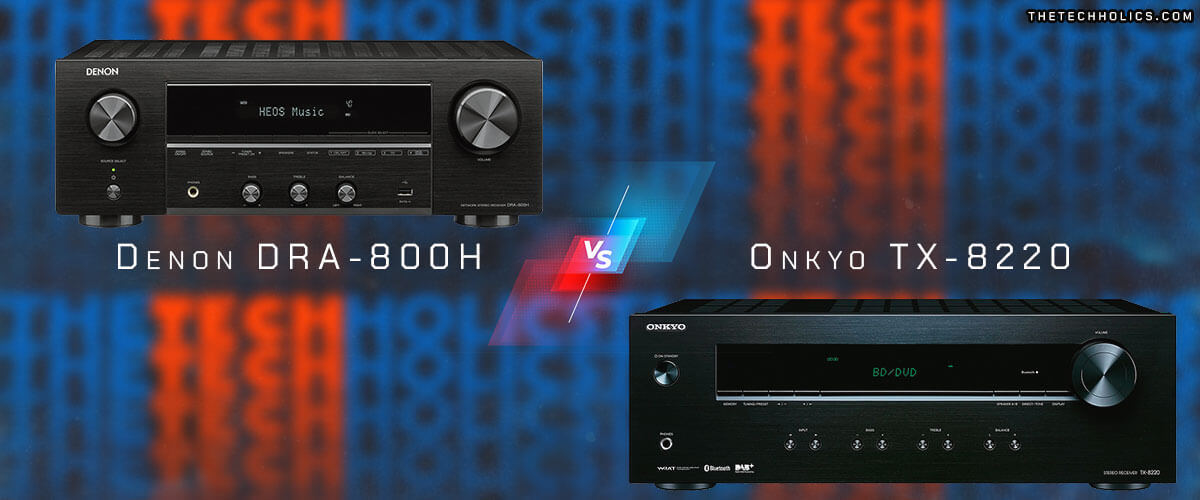
Now, I have to tell you about receivers with 2 channels of amplification of both brands, Denon DRA-800H and Onkyo TX-8220. And there’s not even much to compare here, as both their price and functionality have just a huge difference.
The Onkyo TX-8220, released in 2017, is a pure stereo receiver with 90W per channel and has digital audio inputs (BD/DVD), phono input, and four line-level analog inputs (CD). With Bluetooth version 4.1, you have everything you need at your fingertips to listen to music in superb quality at a super low price.

The Denon DRA-800H, a 2019 model, is a versatile stereo receiver with 5/1 HDMI ports (4K video streaming), a built-in HEOS ecosystem for wireless multi-zone music listening, support for running streaming services and voice assistants, all at 100W per channel. But, dear folks, it costs more than double that.
They’re equal in terms of sound clarity, as the THD is 0.08%, which provides clean, crisp sound with well-separated, wide-range frequencies. And both appealed to me both in digital music and with vinyl.
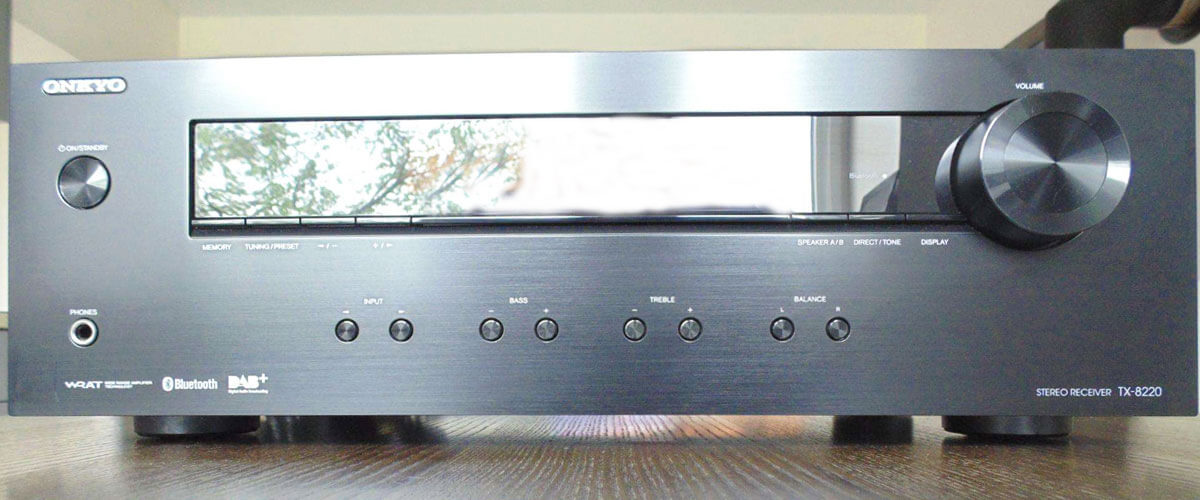
If you’re looking for clean amplification without chips you’re not willing to pay for, the Onkyo TX-8220 is the most sensible choice. But if you’re willing to spend more and end up with extensive wired and wireless capabilities along with quality amplification, I’d recommend choosing the Denon DRA-800H.
Denon DRA-800H key specs
- Channels: 2.2.
- Power output: 100W/8 Ohm, 120W/6 Ohm.
- HDMI inputs/outputs: 5/1.
- Video functions: 4K/60Hz pass-through.
- Bluetooth/Wi-Fi: yes/yes.
- Streaming services: AirPlay2, Deezer, Tidal, Pandora, SiriusXM, Napster, SoundCloud, Amazon Music, Amazon Music HD, Mood mix.
- Supports: HDMI CEC, HDCP2.3, HLG.
- Surround sound: has not.
Onkyo TX-8220 key specs
- Channels: 2.1.
- Power output: 140W/3 Ohms, 120W/4 Ohms, 80W/8 Ohms.
- HDMI inputs/outputs: 4/1.
- Video functions: N/A.
- Bluetooth/Wi-Fi: yes/no.
- Streaming services: has not.
- Surround sound: has not.
Denon DRA-800H
Onkyo TX-8220
FAQ
Are there any known reliability issues with either brand’s recent models?
How do the price ranges of Denon and Onkyo receivers compare?
Which brand offers more features for the price?
Which brand, Denon or Onkyo, is more user-friendly in terms of setup and interface?
We are supported by our audience. When you purchase through links on our site, we may earn an affiliate commission at no extra cost to you.
Our newsletter
* We will never send you spam or share your email with third parties

![Best Budget Receivers [Reviewed and Tested]](https://thetechholics.com/wp-content/uploads/2023/10/best-budget-av-receiver-300x150.jpg)
![Best 9-Channels AV Receivers [Reviewed and Tested]](https://thetechholics.com/wp-content/uploads/2023/10/best-9-2-receiver-300x150.jpg)

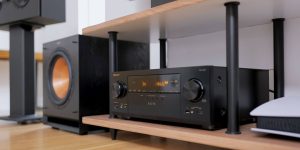
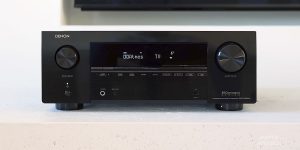
![Pioneer vs Denon Receivers [Top Models Compared and Tested]](https://thetechholics.com/wp-content/uploads/2023/10/denon-vs-pioneer-review-300x150.jpg)
